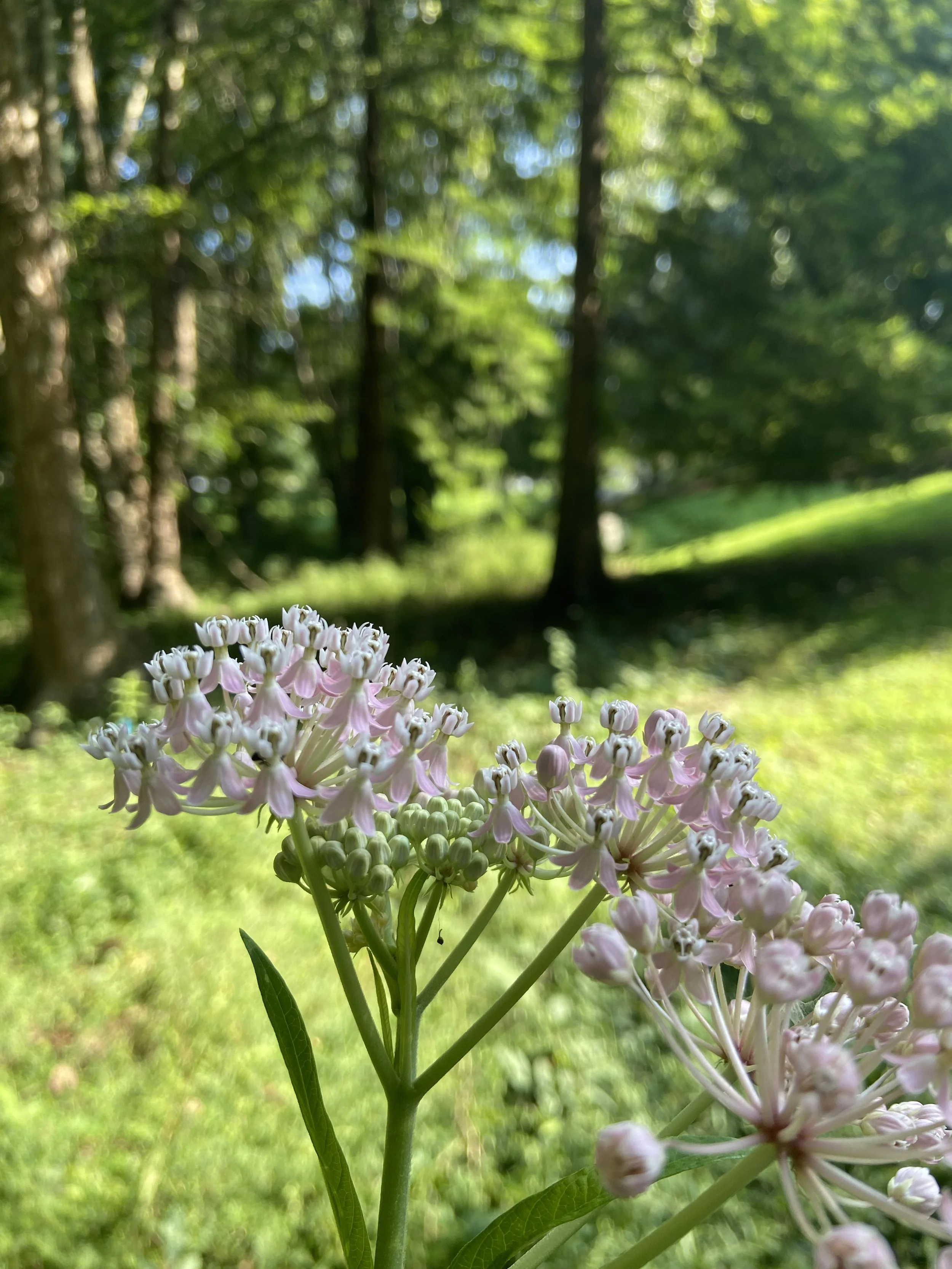
Woods Keeper at
Grant Park

Grant Park Summer Update 08.21.25
It’s been a busy summer for Woods Keeper at Grant Park. As we continue to hold down the Pool Slope, Constitution Springs and the Wetlands we’re also making great headway around the Pond. So far, we’ve removed approximately 33 cubic yards of invasive material from around the Pond!
As always, the name of the game is to identify, remove and suppress non-native invasive plants and identify, protect, and nurture native species…
Some of the invasive plants removed were:
Porcelain Berry (Ampelopsis brevipedunculata), Chinese Elm (Ulmus parvifolia), Bush honeysucke (Lonicera maackii), Privet (Ligustrum sinense), Stiltgrass (Microstegium vimineum), Chaff flower (Achyranthes japonica), and more.
Some native plants preserved:
Sweet Pepperbush (Clethra alnifolia), Sallow Sedge (Carex lurida), Wax Myrtle (Morelia cerifera), Black Willow (Salix nigra), Cutgrass (Leersia virginica), and more.
A very exciting development has been watching native Swamp Milkweed (Asclepias incarnata) pop up in the Wetlands after multiple years of invasive stiltgrass suppression. Word has it that milkweed was planted here years ago by a Grant Park supporter, and we are beyond thrilled to watch it come back, now that there is room to breathe again.
Finally, Woods Keeper’s Michelle Smith has been working very hard with a special colleague of ours on a native plant landscape design to be installed behind our work at Constitution Springs. If the proposal is accepted we can’t wait to give updates on the project!
Thank you to Grant Park Conservancy and their supporters for making this work possible. If you see us out and about in the park don’t hesitate to say hello! We’d be happy to talk about this work that we love so much.
In November of 2022 Woods Keeper began work at Grant Park, beginning in the “wetlands” area near Cherokee Avenue. Majestic bald cypress and river birch trees stand tall while native asters and other wetland plants provide for local wildlife. Several planted native button bushes (Cephalanthus occidentalis) dot the area and it’s impossible to miss the stand of gigantic irises. Invasive plants such as honeysuckle, chaff flower, privet, English ivy, and stiltgrass threaten this space and others around the park as they spread rapidly and crowd out native species.
Woods Keeper’s focus is to remove and suppress these harmful non-native invasive plants so that native plants — plants that provide for the local ecosystem — can continue to exist and better yet, thrive. Biodiversity is the goal while beautification and improved visibility are the perks of the process. Check back here for updates or come enjoy another walk in this beautiful, historic park and see for yourself!
**Does native habitat restoration mean every plant that’s non-native will be removed? No. We believe non-native plants can have a place in landscapes as long as they are not invasive. This issue is not black and white and often requires a nuanced discussion involving the specifics of the site.
Winter is a great time for removal as most natives are dormant, making some invasive plants easy to spot as they are often evergreen.
Cypress knees have long stumped scientists about their purpose but they are unique and wonderful, that’s for sure!





















